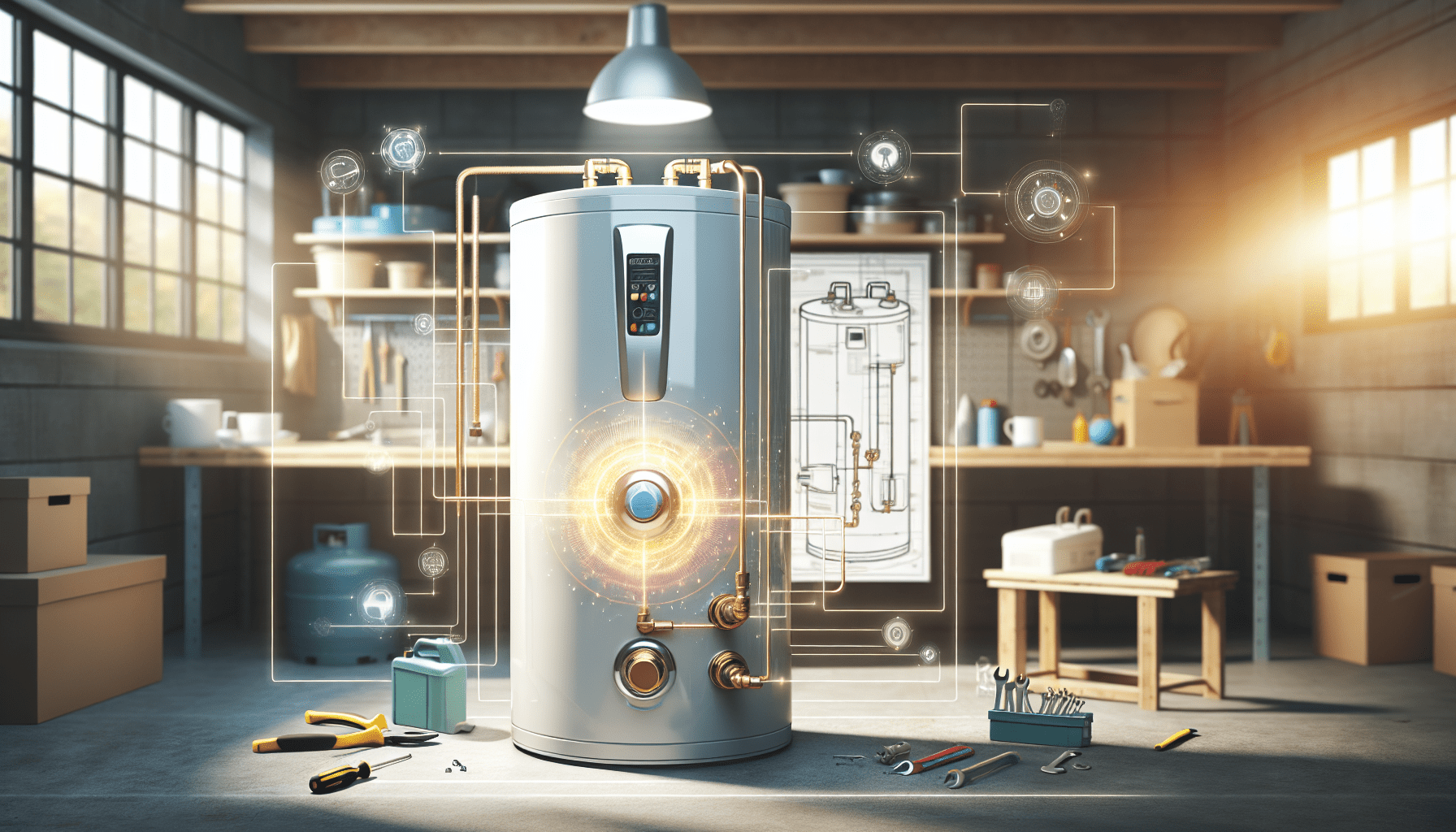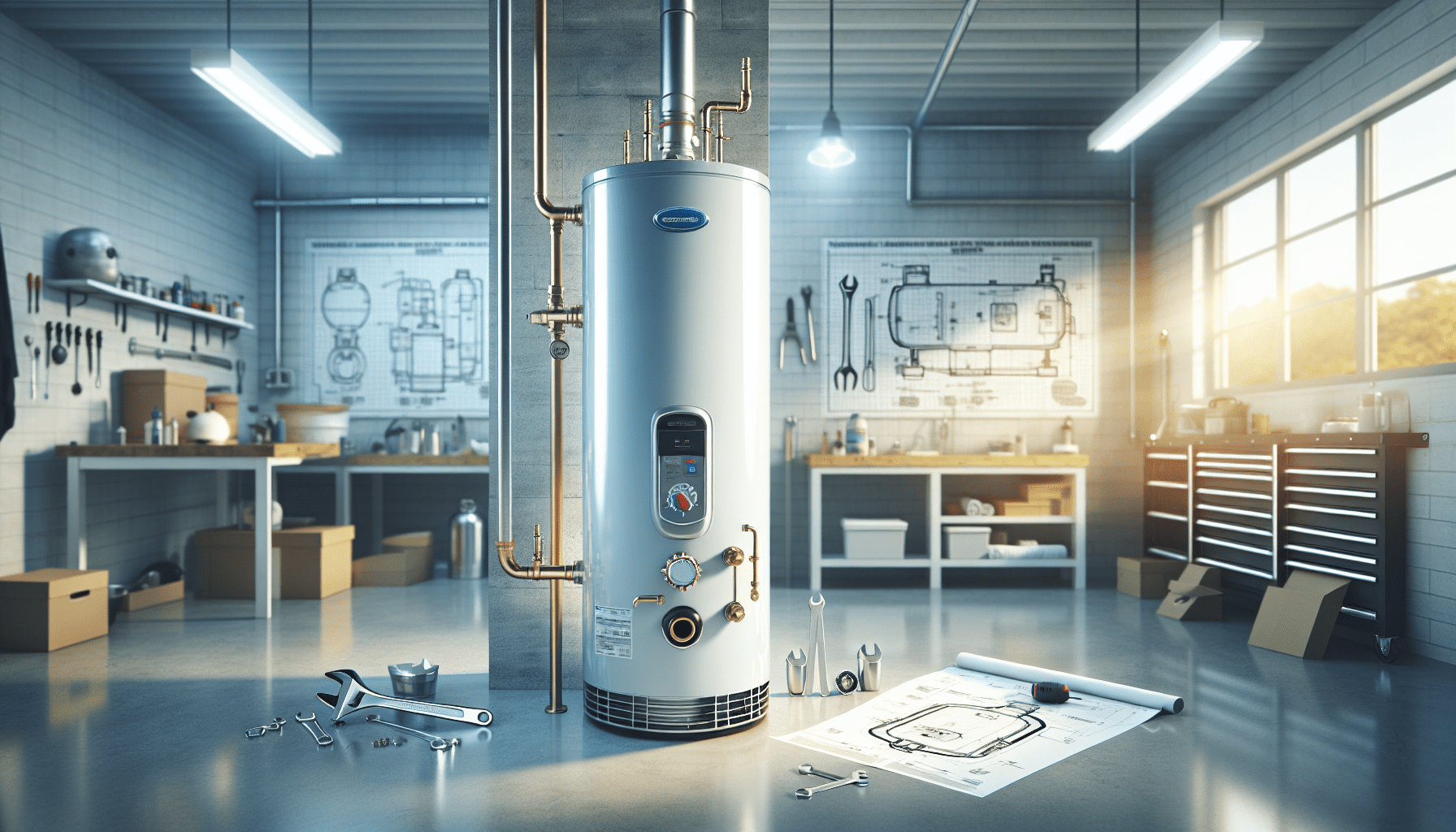Have you ever found yourself staring at your old water heater and wondering if it’s time for an upgrade? Perhaps your home is in desperate need of hot water, and you’ve considered rolling up your sleeves to tackle the installation of a gas water heater yourself. This is a common thought for many homeowners, but is it practical?

Understanding Gas Water Heaters
Gas water heaters are popular for a reason: they heat water quickly and are usually more energy-efficient compared to electric models. When considering whether you can install one yourself, it’s essential to understand how these systems work.
What is a Gas Water Heater?
A gas water heater uses natural gas or propane to heat water. The system typically consists of a tank where water is retained, a burner located at the bottom of the tank, and a flue that vents exhaust gases. The efficiency of this system makes it a great choice for many households, especially those with higher hot water demands.
Why Choose Gas?
Choosing gas over electric water heaters can mean lower utility bills, especially if your area offers cheaper gas rates. Additionally, gas heaters tend to recover faster, giving you more hot water in a shorter time.
Assessing Your Skills
While DIY projects can be rewarding, it’s crucial to be honest with yourself about your skills and experience level. Installing a gas water heater involves plumbing and gas line work, which can quickly become complicated.
Your Plumbing Skills
Do you have experience with plumbing? If you’ve fixed a leaky faucet or installed a showerhead, you might feel confident tackling a water heater installation. However, if your plumbing knowledge extends to merely knowing where the water shut-off valve is, you might want to reconsider.
Your Comfort with Gas Lines
Working with gas lines is not for the faint-hearted. You need to understand how to safely connect, seal, and check for leaks in gas connections. A single mistake can lead to hazardous leaks. If the thought of gas work makes you uneasy, hiring a professional might be a wise choice.

Local Regulations and Permits
Before starting any DIY installation, it’s essential to understand local building codes and regulations. Many areas require permits for gas appliance installations, and failing to adhere to local laws can lead to fines or even more costly repercussions.
Do You Need a Permit?
In many locations, yes, you will need a permit for gas appliance installation. This ensures that the work meets safety and code requirements. It’s always best to check with your local municipality to understand what’s required.
Inspections
Some areas may also require an inspection after installation. The inspector will ensure everything is up to code and safe for use. Familiarize yourself with the process so you aren’t caught off guard.
Choosing the Right Water Heater
If you’ve decided to go ahead with the installation, the next step is selecting the right gas water heater for your needs.
Size Matters
Water heaters come in various sizes measured in gallons. The size you need will largely depend on your household’s hot water demands. Consider how many people live in your home and the number of hot water fixtures in regular use.
Types of Gas Water Heaters
You may encounter different types of gas water heaters, including:
| Type | Description |
|---|---|
| Conventional | Traditional tank water heaters that store hot water for immediate use. |
| Tankless | Heats water on demand, eliminating the need for a storage tank. |
| High-Efficiency | Utilizes advanced technology to minimize energy consumption. |
Understanding these options will help you choose the best fit for your household.
Preparing for Installation
You can compare preparing for a gas water heater installation to preparing for a big dinner party—you want to ensure everything is laid out before the cooking begins.
Gather Your Tools
Before you start, you’ll need a list of tools. Here’s a handy selection to keep you organized:
| Tool | Purpose |
|---|---|
| Pipe Wrench | To tighten or loosen threaded connections. |
| Adjustable Wrench | Useful for various fittings. |
| Screwdriver | For securing connections. |
| Level | To ensure the water heater is set evenly. |
| Safety Goggles | Protect your eyes during installation. |
| Pipe Cutter | To cut pipes to the right length. |
| Teflon Tape | For sealing threaded connections. |
Safety First
Safety is paramount. Ensure that you wear protective gear, work in a well-ventilated area, and turn off the gas supply before starting any work.
Steps for Installation
So, you’re ready to install your gas water heater. Here’s a step-by-step guide to help you through the process.
Step 1: Shut Off Utilities
Before starting, make sure to turn off the gas and water supplies. Check for any electrical connections, if applicable, and disconnect them.
Step 2: Drain the Old Heater
If you’re replacing an old unit, you’ll need to drain it first. Attach a hose to the drain valve and direct the water into a bucket or outside. This can take a while, so consider this your moment to grab a cup of coffee while the tank empties.
Step 3: Disconnect the Old Unit
Once empty, it’s time to disconnect the old water heater. Use the wrench to detach both the gas line and water supply lines. You may need a second pair of hands to manage the old unit’s weight as you pull it free.
Step 4: Position the New Heater
Place your new gas water heater in position, ensuring it’s level and stable. This is when you might start feeling a little proud—a shiny new appliance is in your space, ready to do its job.
Step 5: Connect the Water Lines
Reattach the water lines using the previously used connections. Don’t forget to use Teflon tape on threaded fittings to prevent leaks. You’ll want to feel confident that everything is snug and secure.
Step 6: Install the Gas Line
Connect the gas line to the new unit. Ensure that all fittings are tight, but don’t overdo it—go for snug, not Hulk-level tight.
Step 7: Check for Leaks
This is your moment of truth! Use a mixture of soap and water to check for leaks around the gas connections. If you see bubbles forming, that’s a sign of a leak. Take note and tighten the fittings or consult a professional if needed.
Step 8: Venting
Proper venting is crucial for safety. Ensure the flue is correctly installed, leading outside to vent exhaust gases. Make sure there are no obstructions that could block airflow.
Step 9: Fill the Tank
Once everything is connected, it’s time to turn the water supply back on. As the tank fills, check for any leaks around your connections.
Step 10: Turn On the Gas
With the water tank full, turn on the gas supply. Follow the manufacturer’s instructions for lighting the pilot light—this often involves pressing a button or using a lighter.
Step 11: Set the Temperature
Once the water heater is ignited, set your desired water temperature. Most experts recommend a setting of around 120°F to balance comfort and energy efficiency.
Step 12: Regular Maintenance
Now that you’ve successfully installed your gas water heater, regular maintenance comes into play. Flushing the tank annually and checking for leaks or corrosion will ensure a long lifespan for your unit.
When to Call in the Pros
While the satisfaction of completing a DIY installation can be fulfilling, there are instances when it’s best to bring in the professionals.
Complicated Gas Lines
If your installation requires extensive work on gas lines or extensive venting alterations, it’s often wise to call in a licensed plumber or technician. This expertise can prevent potentially dangerous situations or costly mistakes.
Lack of Comfort or Experience
If at any point during the process you feel uncomfortable or unsure, it’s okay to step back and consult someone with more experience. Your safety should always come first!
Conclusion
So, can you install a gas water heater yourself? The answer lies in your skills, comfort level, and understanding of local regulations. If you’re equipped with the right tools, have a good grasp of plumbing and gas systems, and feel confident about following the installation process, then there’s a good chance you can take on this task.
However, if the thought of working with gas lines makes you anxious or if local regulations are overwhelming, don’t hesitate to reach out for professional help. Remember, the goal is not just to end up with a functioning water heater but to do so safely and efficiently. Happy installing!

